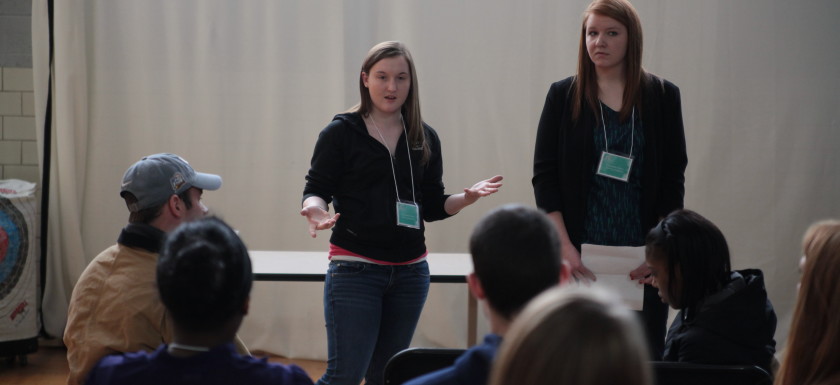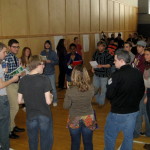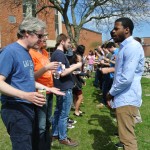
I regularly teach a course on the philosophy and history of the American Civil Rights Movement. The course uses documentary film material (such as the excellent PBS series, Eyes on the Prize) to “bring to life” classroom investigation of the movement. Some of my excellent and dedicated colleagues at Central Michigan University conceived and designed the format of the course over a decade ago.
As I have brought my own training (in philosophy) and interests (in social power and nonviolence) to the course, I have begun to think about ways that we as a class could more vividly understand the kinds of philosophical and pragmatic decisions that ordinary people in the movement had to make in order to bring about transformative changes in their communities, nation, and world. We had learned about how early leaders in the Congress of Racial Equality, such as James Farmer, had studied Gandhian nonviolence and emulated its methods in sit-in campaigns in Chicago as early as the 1940s. We saw how training at the Highlander Folk School helped Rosa Parks to prepare to take direct action in Montgomery when the moment called for her conscientious refusal. We knew the role of Bayard Rustin—an organizer in the Fellowship of Reconciliation and a “freedom rider” on the interstate buses long before the Freedom Rides—in strategizing direct action campaigns from Montgomery to the March on Washington. We knew that leaders like Diane Nash, John Lewis, and Bernard Lafayette learned their philosophy of nonviolent social power in a Nashville church basement from workshops with Rev. James Lawson. We had analyzed the work of Ella Baker in organizing activist communities. We had studied the debates within the Student Nonviolent Coordinating Committee. We knew the transformative power of Mississippi Freedom Summer.

Behind every campaign was the work of preparation. Behind every organized team of activists was the work of education. We undertook a class project: to research, design, and ultimately facilitate a public workshop in nonviolent direct action on our own campus. As the teacher, I was excited but unsure how to guide us through a process that was new to all of us. Students were intrigued but skeptical: can we really become expert enough to train others in a semester? We worked in teams, each responsible for designing and facilitating one of seven activity-based segments of a three-hour workshop. We focused the workshop on a contemporary civil rights issue—mass incarceration (we had been reading Michelle Alexander’s The New Jim Crow)—in order to give the workshop a sense of purpose. By the end of the semester, each team had practiced and revised their segment based on feedback from teacher and peers. We publicized the workshop, assembled materials, and gathered in the spare gym in the campus recreation building to meet with nearly 50 participants who dedicated a beautiful Friday afternoon in April to see what our class could help them to learn about taking direct action.
The student facilitators reflected afterwards on how the project helped them to experience the planning and philosophical motivations of ordinary activists in the Civil Rights Movement. I was sold: this project would become part of this course each time I taught it, and I have begun to make some of the materials available on this site for others who may be attempting a similar experiment.
